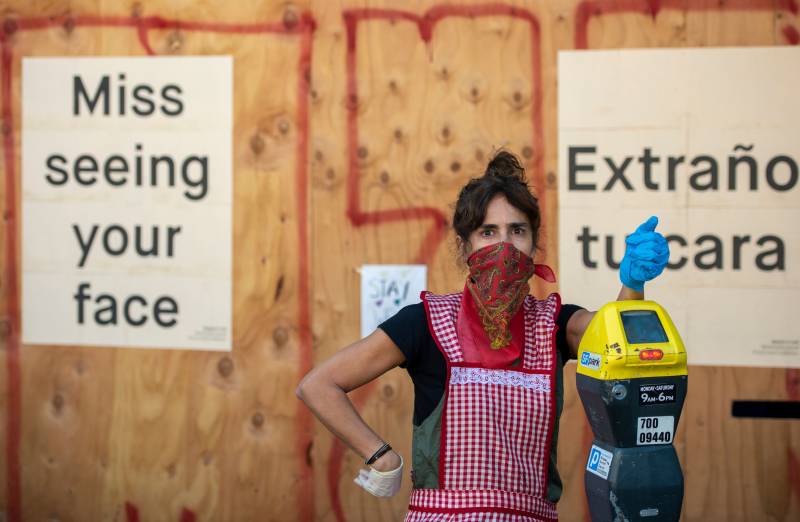Updated Nov. 16, 3 p.m.
As COVID-19 cases and hospitalization rates continue to quickly climb across California and the nation as the winter holidays approach, Gov. Gavin Newsom "pulled the emergency brake" on the state's reopening guidelines on Monday. Newsom announced that a whopping 41 counties – comprising 94% of California's population – would now find themselves in the purple, most restrictive color-coded tier of the state's blueprint for reopening.
Newsom's office also announced new guidelines on mask wearing from the state health department, which supersede a previous order issued in June.
Instead of specifying when masks must be worn, the new order simplifies face-covering guidance by spelling out the only acceptable times to not wear a mask outside the home.
Like the old order, the new guidelines apply to children over the age of 2. The move is based on evidence that COVID-19 can be spread by people who are infected, but are asymptomatic or presymptomatic – and on growing evidence that even cloth face coverings offer some protection to the wearer, and not just other people.
Under the new statewide guidelines, you must wear a face covering when outside of the home at all times, unless one of these exemptions applies:
- When in a car alone or solely with members of your household
- When working in a room alone
- When actively eating or drinking, as long as you're able to maintain 6-foot distance from others who are not members of your household
- When outdoors and maintaining at least 6 feet of social distancing from others not in your household – but you must carry a face covering with you at all times and put it on when within 6 feet
- When obtaining a service involving the nose or face for which temporary removal of the mask is necessary
- When working a job that requires respiratory protection
Certain people are exempt from the order, including:
- Children under the age of 2 should not wear masks due to the risk of suffocation. Unlike previous orders concerning face masks, children under the age of 12 are no longer exempt.
- People with a medical condition, mental health condition or disability that prevents wearing a face covering
- People who are hearing impaired or communicating with a person who is hearing impaired, where the ability to see the mouth is essential for communication
Face coverings include any fabric that fully covers the nose and mouth and fits securely, be that a bandanna, scarf, neck gaiter or homemade cotton mask. Officials are encouraging residents to avoid purchasing N95 or surgical masks, which they say are in short supply and should be reserved for front-line health care workers.
State health officials say masks help "reduce the release of infectious particles into the air when someone speaks, coughs or sneezes, including someone who has COVID-19 but has yet to show any symptoms."
